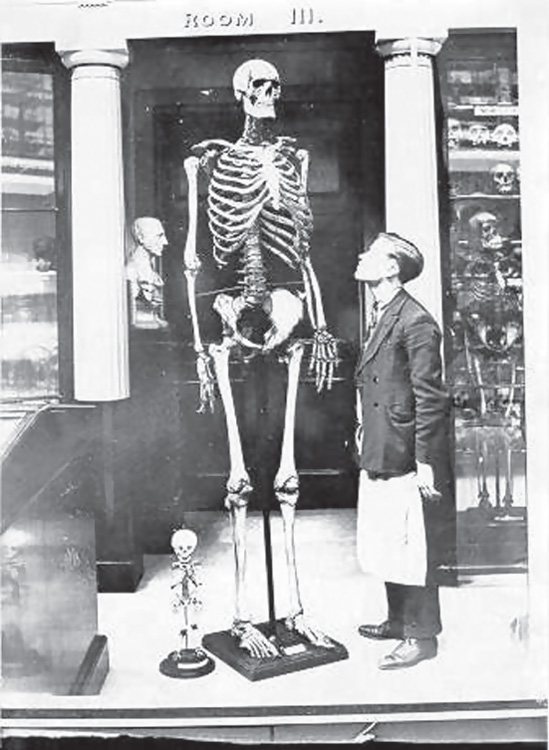CONCLUSION
Now that you have reviewed the evidence for a former race of giants in North America, I invite you to consider both their legends and their reality. There are legends of giants in many cultures, such as the Titans of Greece or Goliath in the Bible. In fact, the Bible has several references to giants, known as the Rephaim, Anakim, Zuzim, Sepherim, and Nephilim, as in the following quote from Numbers 13:32–33: “The land, through which we have gone to search it, is a land that eateth up the inhabitants thereof; and all the people that we saw in it are men of a great stature. And there we saw the giants, the sons of Anak, which come of the giants: and we were in our own sight as grasshoppers, and so we were in their sight.”
Could it truly be that all these cultural legends are mere legends—with no basis in fact? Are these legends just the result of a human need to create something “larger than ourselves”? I think not. In these pages and pages of documentation we have now seen the American giants’ widespread presence, their sophisticated cultures, their royal status, their Caucasian genetic links, and signs of cultural links to other areas of the globe long before Columbus.
The fact that almost no one is aware of these giants today is a telling comment on the role played by the Smithsonian Institution and other institutions of higher learning, on which we rely to explore, preserve, and offer insights into our heritage, perhaps most especially those aspects that hint at broader horizons. What do the roles these institutions have played in this matter teach us about the role of bias in all studies of a supposedly academic or scientific nature? What would be the reason for not keeping this information in the public eye?
And what have we lost by losing our collective memory of these early, extraordinary inhabitants of America? What insights into not only American but also global prehistory might their existence offer us?
It is natural to want to point fingers in a situation like this, but the reality is that no one who is presently at the Smithsonian probably has the faintest idea about the history of the giants presented here. In fact, if their academic indoctrination has been rigorous enough, they will probably still remain unmoved by the overwhelming evidence presented in this book.
This should come as no surprise to those who are aware of the 1,200-ton stones in Baalbek, the advanced mathematics and engineering of the Great Pyramids, or the stories of Atlantis, as related by Plato. We live in an age where we are hypnotized by our own ignorance, acting as if atomic energy and digital electronics are the heights of human achievement, patting ourselves on the back that we are the best and the brightest. One might call it hubris; wiser minds would call it cultural myopia and adolescent grandstanding.
The stories of myth and antiquity are real. There were other ages as great as, or greater than, our own, and whatever we have accomplished was built on the shoulders of giants.

Fig. C.1. “There were giants upon the earth in those days”—Genesis 6:4. The skeletons of Charles Byrne (1761–1783), “The Irish Giant,” and Caroline Crachami (ca. 1815–1824), “The Sicillian Dwarf,” from The Strand Magazine, published in 1896.